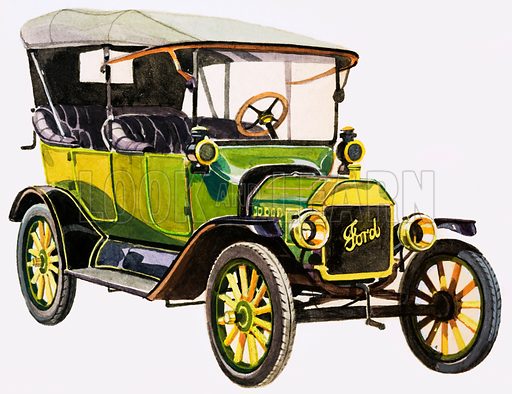
|
For more articles like this go to the Look and Learn articles website. |

Of all the cars which the great Henry Ford made, perhaps the most famous is the Model-T Ford. After the Ford Motor Company was formed in 1903, they began making cars, giving each of them consecutive letters of the alphabet. They reached the letter ‘T’ in 1907, and this model has been called the prototype of the popular car.
The Model-T was the first truly mass-produced car, and everything was aimed at reducing the final cost to the motoring public. The car sold for $500 (about £150) and was an immediate success. The company sold 8,000 of them in the first year and in 1914 they sold the amazing total of 250,000.
But Britain, too, had its famous names, and they are names which live on today. The future Lord Austin was born in 1866, and he was destined to give this country one of its most popular cars. The 7 h.p. Austin tourer was Britain’s first real attempt to build a car which would be within reach of a large section of the public. His most successful car, however, was to come in 1922 when his company produced the world-famous Austin Seven.
William Morris (later Lord Nuffield) was another of Britain’s famous car makers. He started the Morris Works in Oxford in 1893. The first Morris car was built in 1912 and was called a Morris Oxford, but the best-remembered of William Morris’s early models is the Morris Cowley, often called the ‘bull-nosed’ Morris.
Now we come to two names which, above all others, have come to mean the world’s best in motor cars – Charles Stewart Rolls and Frederick Henry Royce. These two men met in 1903, and by the Christmas of the following year the firm of Rolls-Royce was born. Both men were perfectionists, and aimed at building for quality rather than quantity – a tradition which continues to this day.